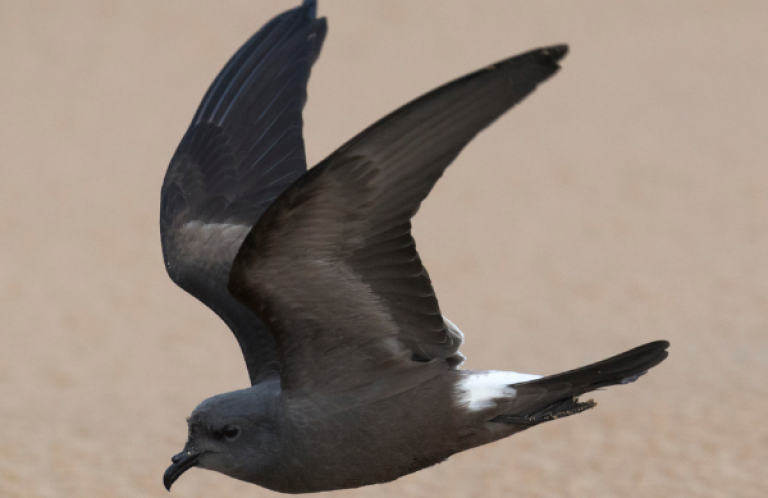Energy Developments Threaten Sage-Grouse Habitat in Wyoming
The Greater Sage-Grouse, a species whose population has declined 93% from historic numbers and that is on the U.S. WatchList of birds of highest conservation concern, is facing a severe decline in the amount of suitable breeding habitat due to energy development. Oil and gas drilling in the region have been booming, driving the birds out of many breeding areas, or leks. In addition, wind farm development in Wyoming and elsewhere in sagebrush habitat may soon add to the problem. Horizon Wind Energy is proposing to build 154 turbines in prime Sage-Grouse habitat.
Studies have found that Sage-Grouse abandon leks near drilling areas and areas with tall structures where predators could perch. To minimize impacts, regulators have issued rules to keep drilling rigs one kilometer (.6 miles) away from known leks. A proposed wind project in Wyoming is following these same guidelines, but because wind turbines are much taller than drilling rigs, a larger buffer may be necessary. The Biodiversity Conservation Alliance and a coalition of conservation groups recently released Wind Power in Wyoming: Doing it Smart from the Start which recommends a five-mile buffer for wind developments, the same standard the U.S. Fish and Wildlife has been recommending since 2003.
“We can avoid unnecessary impacts to the rapidly declining Greater Sage-Grouse by providing adequate buffers,” said Dr. Michael Fry, American Bird Conservancy's Director of Conservation Advocacy. “Evidence indicates the one kilometer buffer currently being considered for Horizon's wind project is insufficient.”
According to a report by WildEarth Guardians, more than 80% of remaining Greater Sage-Grouse habitat is under threat, while only 3% is federally protected to any degree, putting the species at severe risk. The new report, entitled The Shrinking Sagebrush Sea, is the first comprehensive analysis of all the significant threats to sagebrush steppe habitat, and comes before the U.S. Fish and Wildlife Service is due to decide whether to list its most emblematic resident, the Greater Sage-Grouse, under the Endangered Species Act (ESA).
American Bird Conservancy drew attention to the threats faced by sagebrush habitat in 2006, when it placed it at number three in the list of The Top 20 Most Threatened Bird Habitats in the U.S., based on the damage caused by livestock grazing, oil and gas development, and the spread of invasive cheatgrass.
"Destructive oil and gas drilling, pervasive livestock grazing, weed incursion, and countless other impacts are draining the life out of the Sagebrush Sea," said Mark Salvo, Director of the Sagebrush Sea Campaign for WildEarth Guardians, and author of the report. "Sage-grouse are suffering from this mismanagement of sagebrush steppe."
WildEarth Guardians reports that livestock grazing is permitted on 91% of federal land currently inhabited by the sage-grouse, and 13% (2.24 million acres) of the sage-grouse's total current range is within 2 miles of oil or natural gas development. This increases to 23% in Montana, Wyoming, Utah, and Colorado, where the majority of energy development occurs. Cheatgrass, a non-native, flammable weed, destroys sagebrush steppe, and is present in 36% of the sage-grouse's current range. The report also identified roads and increasing wildfire as important threats to sagebrush steppe.


















































